Vincenzo Caruso - Vico Novecento (A Century of Neapolitan Piano Stories) (2024)
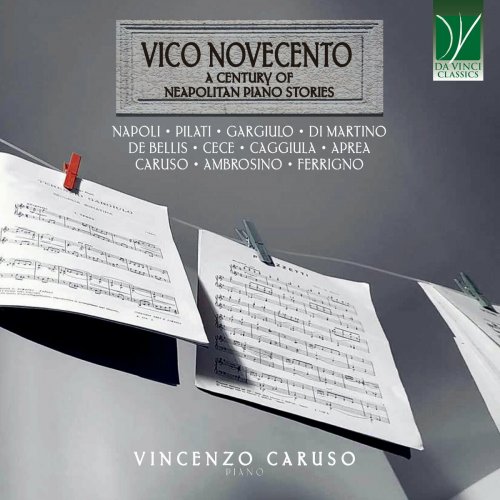
Artist: Vincenzo Caruso
Title: Vico Novecento (A Century of Neapolitan Piano Stories)
Year Of Release: 2024
Label: Da Vinci Classics
Genre: Classical
Quality: FLAC (tracks)
Total Time: 72:56 min
Total Size: 252 MB
WebSite: Album Preview
Tracklist:Title: Vico Novecento (A Century of Neapolitan Piano Stories)
Year Of Release: 2024
Label: Da Vinci Classics
Genre: Classical
Quality: FLAC (tracks)
Total Time: 72:56 min
Total Size: 252 MB
WebSite: Album Preview
01. Scene infantili: I. Marionette
02. Scene infantili: II. Ninna nanna
03. Scene infantili: III. Barbone in sogno
04. Scene infantili: IV. Piccola tristezza
05. Scene infantili: V. Serenatella a Pupa
06. Scene infantili: VI. L’angelus
07. Novelletta
08. Seconda sonatina: I. Tempo - Allegretto
09. Seconda sonatina: II. Tempo - Piccola Marcia
10. Seconda sonatina: III. Tempo - Piccola Toccata
11. Suite Napoletana: I. Impressioni
12. Suite Napoletana: II. La Palommella
13. Suite Napoletana: III. Tarantella
14. Polka galop
15. Pupazzetti
16. Capriccio in bianco e nero
17. Un momento infantile
18. From 15 Danze per pianoforte: No. 1, Danza di Arlecchino
19. From 15 Danze per pianoforte: No. 2, Danza di Pulcinella
20. Tre arie antiche: Introduzione
21. Tre arie antiche: No. 1, Amor ch’attendi
22. Tre arie antiche: No. 2, O leggiadri occhi belli
23. Tre arie antiche: No. 3, Bella porta di rubini
24. Sguardi novecenteschi sulla canzone Napoletana: No. 1, Sta vecchia canaruta
25. Sguardi novecenteschi sulla canzone Napoletana: No. 2, La Procidana
26. Sguardi novecenteschi sulla canzone Napoletana: No. 3, Michelemmà
27. Sguardi novecenteschi sulla canzone Napoletana: No. 4, Canto delle lavandaie del Vomero
28. Sguardi novecenteschi sulla canzone Napoletana: No. 5, Fenesta vascia
29. Sguardi novecenteschi sulla canzone Napoletana: No. 6, La Danz
30. Sguardi novecenteschi sulla canzone Napoletana: No. 7, Reginella
31. Sguardi novecenteschi sulla canzone Napoletana: No. 8, Tarantella Napoletana
32. Sguardi novecenteschi sulla canzone Napoletana: No. 9, Pilatiana -Fantasia pianistica su temi scelti da “Echi di Napoli”
33. Serenatella Napoletana
34. The last Neapolitan autopiano
The center of the city of Naples is a labyrinth of narrow streets, frequently called “vico”. In Vincenzo Caruso’s definition, a vico is “a narrow street – an alley that winds between large Italian historic buildings”. Unless one knows the map by heart, it is practically impossible not to get lost in that intricate web of minuscule openings between old buildings. It is also fascinating to lose oneself, vico after vico, savouring the unmistakable and unique colours, sounds, scents and impressions of a city like no other. If one would feel the need for a further, imaginary vico after so many actual ones, the pianist and composer of this Da Vinci Classics album, Vincenzo Caruso, created a new, hidden vico just for his listeners. He called it Vico Novecento, and drew it, in an imagined map, as a line connecting the Conservatory of Naples (San Pietro a Majella) to a publishing company, Casa Musicale Simeoli, opposite it. Caruso explains: “I imagine a frequent coming and going of composers, teachers of the conservatory, who in a few steps were in the sheet music shop to check that their works had been printed correctly”.
The Casa Musicale Simeoli was founded in the Twenties, when the founder, Salvatore Simeoli, undertook a flourishing publishing activity in the musical field. For over a century, the Company has been a reference point for the musical life of Naples and beyond. In the Thirties, the Company moved to the Conservatory area, where it became a pivotal element for all musicians of the city; its publications span over a century of music and a variety of different genres.
Thus, the first part of this CD comprises works by twentieth-century Neapolitan composers, while the second offers freshly-composed elaborations from the Neapolitan repertoire. Many works recorded here are either rarely recorded or offered in a world premiere.
Gennaro Napoli (1881-1943), a former pupil of the Conservatory, taught composition there for many years, contributing to the musical education of numerous musicians; his theoretical works are still indispensable in the education of budding musicians. Many among the musicians featured here were either his direct pupils or at least influenced by him. His Scene infantili, whose title echoes the Italian translation of Schumann’s Kinderszenen, were written in 1926 and printed by Ricordi. Originally, the cycle had been written for orchestra, but the composer himself transcribed it for solo piano. Virtually nothing gets lost in translation, resulting in a pleasant musical itinerary made of delightful sketches. The titles evoke a child’s world, with puppets, lullabies, serenades to dolls (just as in Debussy’s Children’s Corner!), and – with a quintessentially Italian touch – the Angelus, a prayer traditionally practised thrice a day by many devout Catholics who remember Christ’s incarnation.
Mario Pilati (1903-1938) received his musical education at the same Conservatory, among others with Francesco Cilea, and he returned to the same institution in 1930 after some years in other Italian cities (among them Milan where he privately taught Gianandrea Gavazzeni). His untimely death prevented him from fully accomplishing the potential and fame his talent deserved, and which are evidently demonstrated by his surviving output. His Novelletta, written when the composer was just 18 (1921) and published by Casa Musicale Simeoli, is a case in point, with its brilliant handling of the musical material and fresh ideas.
Terenzio Gargiulo (1903-1972) was born in Pilati’s same year, but outlived him by more than thirty years. His education had taken place, once more, at the Conservatory of Naples with Florestano Rossomandi (piano) and Antonio Savasta and Camillo De Nardis for composition. His career developed in the fields of both composition and piano, with a special focus on teaching which included directorships of some important Conservatories (Reggio Calabria, Palermo, and Naples). His musical style evolved in time, passing from a pronounced melodic vein to serial influences. His Seconda Sonatina, written in 1935 and published by Simeoli, refers to the traditional tripartite Classical Sonata allegro but tends to contract and reduce the development pointing to the essential building elements.
Aladino Di Martino (1908-1989) was born in Molise, the smallest region of Italy, and was encouraged by his father to undertake musical studies in Naples, where he was mentored, among others, by Gennaro Napoli. He graduated there and began a luminous career as a composer, teacher, and director of several Conservatories throughout the Italian Peninsula. He is still remembered not only as a great artist but also as an extremely kind and good-hearted man. His musical and human standing are witnessed by some of his former students, including one of the greatest musicians of today’s concert scene, i.e. conductor Riccardo Muti.
His Suite Napoletana represents therefore a loving homage to Naples by a composer who had not been born there, but who had become an adopted child of this extraordinary city. There, he had found his vocation as a musician and the possibility to fulfill it thanks to the opportunities it offered. But Naples is also an endless source of inspiration for artists, and most notably for musicians. There is virtually no vico which does not resound with a song, a scrap of music issuing from a radio, or somebody’s whistling – and this was all the more valid before the invention of portable devices of music reproduction. Thus, the Suite Napoletana weaves some archetypal tunes of the Neapolitan tradition, including one of its undisputed symbols, the song Palommella. The suite closes brilliantly on the musical whirlwind of a Tarantella.
If Gennaro Napoli had been the teacher of, among others, Di Martino, his son Jacopo features here as the composer of a Polka-Galop published in 1966 by Curci. Jacopo Napoli (1911-1994) studied composition under his father’s guidance at the omnipresent Conservatory of Naples, graduating also in piano and organ. In his early twenties he was awarded important prizes, and his debut as an operatic composer (at the Teatro San Carlo, at the Alla Scala Theatre and later in Germany) was hailed as the revelation of a refreshing reinterpretation of the Classical Neapolitan opera buffa. His connection with Naples (mirrored even in his family name!) would mark many works in his large output, ranging from modern reappraisals of the Neapolitan tradition to musical depictions of his city and its surroundings. He also served as Director of both the Conservatory of Naples and of the San Carlo Theatre, as well as of the Conservatory of Milan. Riccardo Muti studied also under his guidance. His Polka-Galop is a short album leaf where the composer demonstrates a quintessential trait of his personality, i.e. his brilliant irony.
Irony is also abundantly found in Pupazzetti (1969), i.e. “dummies”, by Enzo De Bellis (1907-1982), another important figure of the Neapolitan school. This piece, published by Simeoli, is another miniature where playfulness abounds. The childlike component of the marionettes is evoked by the simple musical context, whilst the dissonances, aptly disseminated throughout the score, suggest their awkwardness and lopsidedness.
Alfredo Cece (1915-2002) also belonged in a family of musicians; his elder brothers, Antonio and Alfonso, encouraged and fostered his first musical efforts and provided him with the first rudiments of this art. He graduated at the Conservatory of Naples, studying in turn with Gennaro Napoli, during Cilea’s directorship, obtaining four diplomas (organ, composition, instrumentation for wind band and choral music). His career, similar to that of other of his colleagues cited here, included substantial teaching and important roles of directorship. His large output encompasses a great variety of musical genres. His Capriccio in bianco e nero, published by Simeoli in 1972, is more pronouncedly modern than others recorded here. The refined language employed by Cece makes use of atonality, whose unmitigated harshness is heightened by an angular and percussive rhythmic design.
Antonio Caggiula is also remembered as an important and enlightened professor, although his teaching activity took place in Florence rather than in Naples. There, he had the opportunity of demonstrating not only his professional value, but also his broad-mindedness when an exceptional student entered his room. It was Stefano Bollani, now known worldwide as one of the greatest jazz pianists of today’s scene. Bollani secretly took jazz lessons prior to his diploma in classical piano, and, when Caggiula found out, Bollani was terrified that his teacher could dismiss him. Instead, Caggiula – who had virtually no interest in jazz – respected his pupil’s choice and encouraged him. At the same time, Bollani remembers fondly the teaching of this professor and his technical method which formed his approach. Caggiula’s Un momento infantile (A Childhood Moment), published by Simeoli, is yet another piece regarding infancy. It is a short piece which reveals the aesthetical tensions animating the musical scene halfway through the twentieth century.
Tito Aprea (1904-1989) had been yet another student of great piano pedagogue Alessandro Longo in Naples, and of composition with Gennaro Napoli. He taught in Tunis and later in Rome, becoming the director of the Conservatory in Cagliari for a decade. He was an acclaimed performer, also in duo with violinist Gioconda De Vito. His two Dances recorded here (Danza di Arlecchino, “Arlequin’s Dance”, and Danza di Pulcinella, “Punch’s Dance”: Ricordi, 1973) were written for the students of the Conservatory of Cagliari, and belong in a larger series of 15 dances.
The second part of this CD features piano elaborations by Vincenzo Caruso after vocal works. In the arranger’s words, they “constitute an excellent ‘pretext of consonance’ to be ‘chipped’ and filtered through a gaze that winks with ‘guilty’ satisfaction at the twentieth century”. They include Tre arie antiche (2015), taken from Parisotti’s Aria collections. After a brief introduction there follow some arias: “Amor ch’attendi”, by Giulio Caccini, “O leggiadri occhi belli” by an anonymous cinoiser and “Bella porta di rubini” by Andrea Falconieri. The piano elaboration contains a vague neoclassical flavour. Sguardi novecenteschi sulla canzone napoletana (2022) is a selection of eight popular Neapolitan songs, from villanellas to those of the early 1900s, while Pilatiana (2023) is a piano Fantasy on themes excerpted from Mario Pilati’s Echi di Napoli. The album is completed by two pieces commissioned to two living composers, Fabio Ambrosino and Ciro Ferrigno, who explored and found a contemporary musical language which refers to the Neapolitan soundscape.
Chiara Bertoglio
The Casa Musicale Simeoli was founded in the Twenties, when the founder, Salvatore Simeoli, undertook a flourishing publishing activity in the musical field. For over a century, the Company has been a reference point for the musical life of Naples and beyond. In the Thirties, the Company moved to the Conservatory area, where it became a pivotal element for all musicians of the city; its publications span over a century of music and a variety of different genres.
Thus, the first part of this CD comprises works by twentieth-century Neapolitan composers, while the second offers freshly-composed elaborations from the Neapolitan repertoire. Many works recorded here are either rarely recorded or offered in a world premiere.
Gennaro Napoli (1881-1943), a former pupil of the Conservatory, taught composition there for many years, contributing to the musical education of numerous musicians; his theoretical works are still indispensable in the education of budding musicians. Many among the musicians featured here were either his direct pupils or at least influenced by him. His Scene infantili, whose title echoes the Italian translation of Schumann’s Kinderszenen, were written in 1926 and printed by Ricordi. Originally, the cycle had been written for orchestra, but the composer himself transcribed it for solo piano. Virtually nothing gets lost in translation, resulting in a pleasant musical itinerary made of delightful sketches. The titles evoke a child’s world, with puppets, lullabies, serenades to dolls (just as in Debussy’s Children’s Corner!), and – with a quintessentially Italian touch – the Angelus, a prayer traditionally practised thrice a day by many devout Catholics who remember Christ’s incarnation.
Mario Pilati (1903-1938) received his musical education at the same Conservatory, among others with Francesco Cilea, and he returned to the same institution in 1930 after some years in other Italian cities (among them Milan where he privately taught Gianandrea Gavazzeni). His untimely death prevented him from fully accomplishing the potential and fame his talent deserved, and which are evidently demonstrated by his surviving output. His Novelletta, written when the composer was just 18 (1921) and published by Casa Musicale Simeoli, is a case in point, with its brilliant handling of the musical material and fresh ideas.
Terenzio Gargiulo (1903-1972) was born in Pilati’s same year, but outlived him by more than thirty years. His education had taken place, once more, at the Conservatory of Naples with Florestano Rossomandi (piano) and Antonio Savasta and Camillo De Nardis for composition. His career developed in the fields of both composition and piano, with a special focus on teaching which included directorships of some important Conservatories (Reggio Calabria, Palermo, and Naples). His musical style evolved in time, passing from a pronounced melodic vein to serial influences. His Seconda Sonatina, written in 1935 and published by Simeoli, refers to the traditional tripartite Classical Sonata allegro but tends to contract and reduce the development pointing to the essential building elements.
Aladino Di Martino (1908-1989) was born in Molise, the smallest region of Italy, and was encouraged by his father to undertake musical studies in Naples, where he was mentored, among others, by Gennaro Napoli. He graduated there and began a luminous career as a composer, teacher, and director of several Conservatories throughout the Italian Peninsula. He is still remembered not only as a great artist but also as an extremely kind and good-hearted man. His musical and human standing are witnessed by some of his former students, including one of the greatest musicians of today’s concert scene, i.e. conductor Riccardo Muti.
His Suite Napoletana represents therefore a loving homage to Naples by a composer who had not been born there, but who had become an adopted child of this extraordinary city. There, he had found his vocation as a musician and the possibility to fulfill it thanks to the opportunities it offered. But Naples is also an endless source of inspiration for artists, and most notably for musicians. There is virtually no vico which does not resound with a song, a scrap of music issuing from a radio, or somebody’s whistling – and this was all the more valid before the invention of portable devices of music reproduction. Thus, the Suite Napoletana weaves some archetypal tunes of the Neapolitan tradition, including one of its undisputed symbols, the song Palommella. The suite closes brilliantly on the musical whirlwind of a Tarantella.
If Gennaro Napoli had been the teacher of, among others, Di Martino, his son Jacopo features here as the composer of a Polka-Galop published in 1966 by Curci. Jacopo Napoli (1911-1994) studied composition under his father’s guidance at the omnipresent Conservatory of Naples, graduating also in piano and organ. In his early twenties he was awarded important prizes, and his debut as an operatic composer (at the Teatro San Carlo, at the Alla Scala Theatre and later in Germany) was hailed as the revelation of a refreshing reinterpretation of the Classical Neapolitan opera buffa. His connection with Naples (mirrored even in his family name!) would mark many works in his large output, ranging from modern reappraisals of the Neapolitan tradition to musical depictions of his city and its surroundings. He also served as Director of both the Conservatory of Naples and of the San Carlo Theatre, as well as of the Conservatory of Milan. Riccardo Muti studied also under his guidance. His Polka-Galop is a short album leaf where the composer demonstrates a quintessential trait of his personality, i.e. his brilliant irony.
Irony is also abundantly found in Pupazzetti (1969), i.e. “dummies”, by Enzo De Bellis (1907-1982), another important figure of the Neapolitan school. This piece, published by Simeoli, is another miniature where playfulness abounds. The childlike component of the marionettes is evoked by the simple musical context, whilst the dissonances, aptly disseminated throughout the score, suggest their awkwardness and lopsidedness.
Alfredo Cece (1915-2002) also belonged in a family of musicians; his elder brothers, Antonio and Alfonso, encouraged and fostered his first musical efforts and provided him with the first rudiments of this art. He graduated at the Conservatory of Naples, studying in turn with Gennaro Napoli, during Cilea’s directorship, obtaining four diplomas (organ, composition, instrumentation for wind band and choral music). His career, similar to that of other of his colleagues cited here, included substantial teaching and important roles of directorship. His large output encompasses a great variety of musical genres. His Capriccio in bianco e nero, published by Simeoli in 1972, is more pronouncedly modern than others recorded here. The refined language employed by Cece makes use of atonality, whose unmitigated harshness is heightened by an angular and percussive rhythmic design.
Antonio Caggiula is also remembered as an important and enlightened professor, although his teaching activity took place in Florence rather than in Naples. There, he had the opportunity of demonstrating not only his professional value, but also his broad-mindedness when an exceptional student entered his room. It was Stefano Bollani, now known worldwide as one of the greatest jazz pianists of today’s scene. Bollani secretly took jazz lessons prior to his diploma in classical piano, and, when Caggiula found out, Bollani was terrified that his teacher could dismiss him. Instead, Caggiula – who had virtually no interest in jazz – respected his pupil’s choice and encouraged him. At the same time, Bollani remembers fondly the teaching of this professor and his technical method which formed his approach. Caggiula’s Un momento infantile (A Childhood Moment), published by Simeoli, is yet another piece regarding infancy. It is a short piece which reveals the aesthetical tensions animating the musical scene halfway through the twentieth century.
Tito Aprea (1904-1989) had been yet another student of great piano pedagogue Alessandro Longo in Naples, and of composition with Gennaro Napoli. He taught in Tunis and later in Rome, becoming the director of the Conservatory in Cagliari for a decade. He was an acclaimed performer, also in duo with violinist Gioconda De Vito. His two Dances recorded here (Danza di Arlecchino, “Arlequin’s Dance”, and Danza di Pulcinella, “Punch’s Dance”: Ricordi, 1973) were written for the students of the Conservatory of Cagliari, and belong in a larger series of 15 dances.
The second part of this CD features piano elaborations by Vincenzo Caruso after vocal works. In the arranger’s words, they “constitute an excellent ‘pretext of consonance’ to be ‘chipped’ and filtered through a gaze that winks with ‘guilty’ satisfaction at the twentieth century”. They include Tre arie antiche (2015), taken from Parisotti’s Aria collections. After a brief introduction there follow some arias: “Amor ch’attendi”, by Giulio Caccini, “O leggiadri occhi belli” by an anonymous cinoiser and “Bella porta di rubini” by Andrea Falconieri. The piano elaboration contains a vague neoclassical flavour. Sguardi novecenteschi sulla canzone napoletana (2022) is a selection of eight popular Neapolitan songs, from villanellas to those of the early 1900s, while Pilatiana (2023) is a piano Fantasy on themes excerpted from Mario Pilati’s Echi di Napoli. The album is completed by two pieces commissioned to two living composers, Fabio Ambrosino and Ciro Ferrigno, who explored and found a contemporary musical language which refers to the Neapolitan soundscape.
Chiara Bertoglio
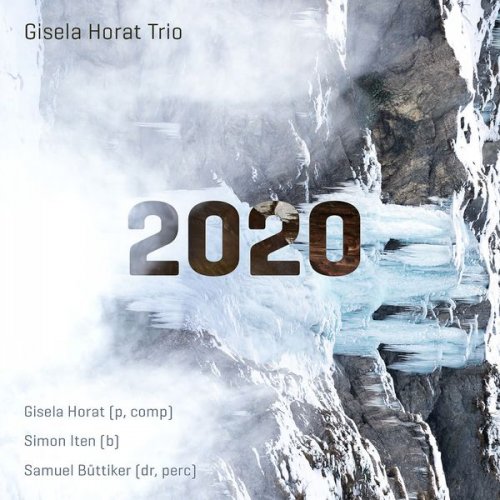

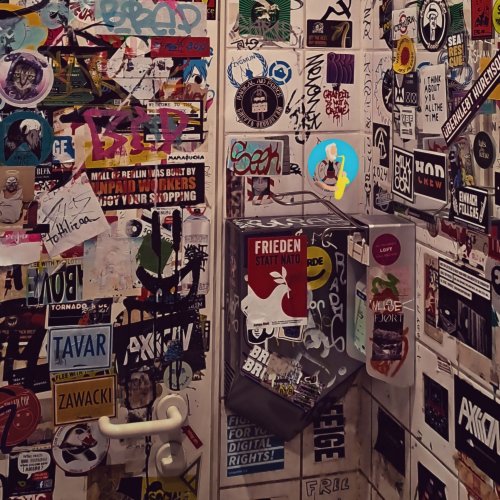
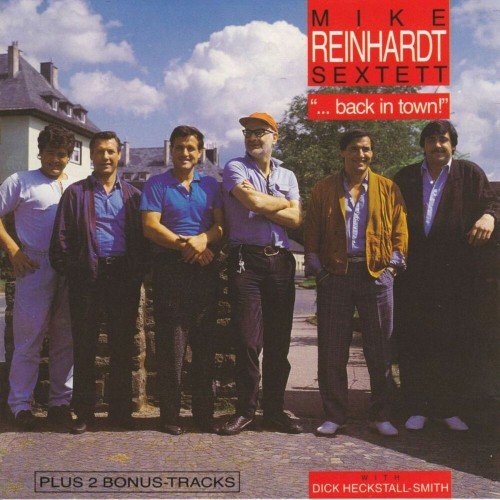

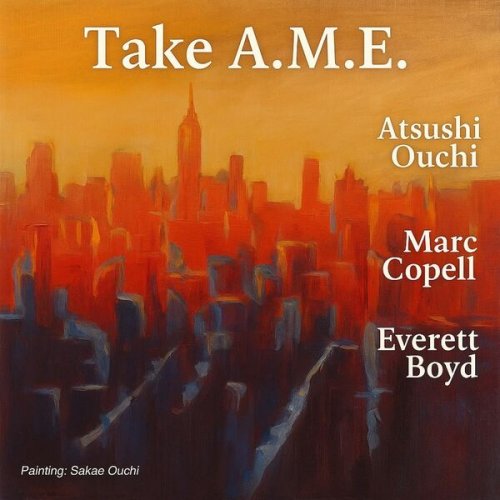
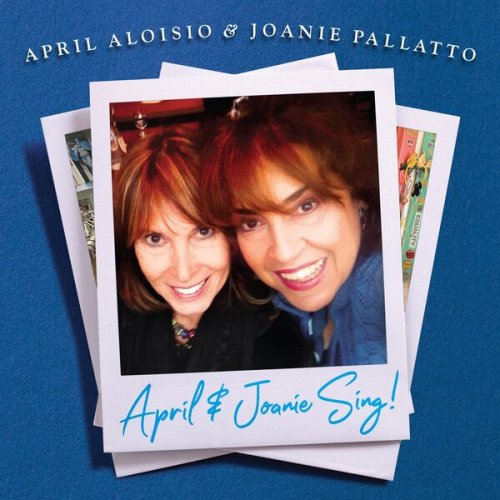
![Fatty George - Fatty George meets Lionel Hampton & Beryl Bryden (2020) [Hi-Res] Fatty George - Fatty George meets Lionel Hampton & Beryl Bryden (2020) [Hi-Res]](https://www.dibpic.com/uploads/posts/2025-12/1767087774_fglh.jpg)
